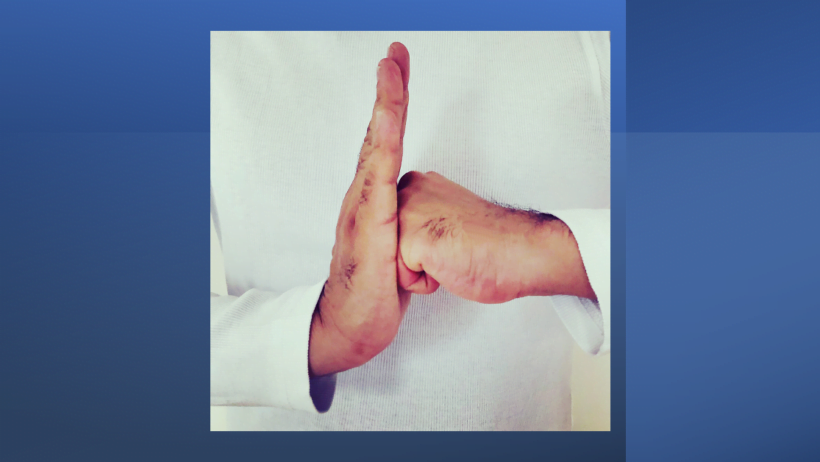As a meditating surgeon and a single father of a son who is two years away from his first major school examinations, I am aware of the anxieties faced by 21st century school-children and also have my own. There is now irrefutable evidence in the scientific literature (over 3000 peer-reviewed publications) on the benefits of meditation. This article describes the benefits to children as well as providing some simple practices. To accompany this article there are meditation tracks specially designed for the young which can be found in the meditation library.


Focus and attention
Until very recently, the teaching of attention was overlooked and left to chance. Differences may indeed be related to circumstances outside of school but it is within every child’s grasp to acquire and improve this extremely valuable life skill through mindful practices. Meditation itself, requires focus on a single object, usually the breath. The skill that is developed is recognising when the mind is distracted by wandering thoughts and to bring ones attention back to the breath. The process of recognising ones distraction is said to be the underlying process behind the increases in brain density seen after the regular practice of meditation (within six weeks in some studies).
There is increased reporting of the prevalence of attention deficit disorders, this is partly due to the increased recognition of this condition but the modern lifestyle and ease of access to social media and technology, no doubt also play a part. A 2004 study looking at children with ADHD treated with meditation twice weekly in a clinic setting and continuing this practice at home, found those children had improved concentration. A 2011 study on Mindfulness-Based Cognitive Therapy in Children (MBCT-C) demonstrated improvements in attention and behavioural problems as well as reduced anxiety. It has also been shown to reduce hyperactivity behaviour in those children where this is a major factor.


Following the killing of 38 of its residents in 2006, one San Francisco district, the following year introduced a meditation programme called ‘Quiet Time’. They introduced this initiative by increasing the school day by half an hour and incorporating two 15-minute meditation sessions, one in the morning and one in the afternoon. The results were staggering:
Just one month after starting Quiet Time, teachers noticed changes in children’s behaviour with students being ‘happier and working harder and paying more attention’.
In the Quiet Time District, in one school which had 500 students aged 11-13 suspensions fell by 45%. At time of writing, some 20% of students from this area were admitted to the highly academic Lowell High School, prior to the introduction of Quiet Time, it was rare for even a single student to be admitted.


De-stress for academic success
You may have noticed that when you are fully absorbed in an activity, the usual mental activity goes very much into the background or even becomes unnoticeable. Take the example of watching a sunset or playing with a child. The mind is not worried or anxious, it’s not preoccupied with thoughts of the past or projections of the future, it is fully present and in the moment.
Meditation and mindfulness go hand in hand. If you like, you could consider meditation to be focussed mindfulness. With the regular practice of meditation, you learn to be more present and focus on a single activity with reduced perceptions of the background mental noise that is present. Meditation cam give the child some necessary ‘space’ away from the stressors that modern day children experience.
Respond rather than react
The practice of mindfulness can be defined as the ability to pay intentional attention to the present moment experience in an open curious and non-judgemental manner. Seeing how thoughts and reactions arise creates an internal environment where the child can respond more appropriately rather than be reactive, especially in the context of negative thoughts or emotions.
Self-awareness and self-regulation
Children have a tendency to internalise things, however a study from a school Merseyside (in one of the most deprived parts of Britain) found that through the teaching of mindfulness, a number of the quieter children became more open about the stresses and anxieties that they were experiencing at home. It is intuitive that adolescent children, learning to manage their own internal issues, who are taught about self-awareness (rather than stumbling on it through chance or trial and error) will be better able to self-regulate their reactions. One study found that children who learned mindful awareness practices had better executive function (the ability to manage oneself and resources to achieve a goal) after just eight weeks of twice weekly practice. Another study found that mindful yoga treatment helped children self-regulate over a longer study period – one year.
“Kids who practice yoga, meditation and mindfulness build skills of attention, self-awareness and self-management leading to more responsible decision making and prosocial behaviour”
Lisa Flynn, Founder – Yoga 4 Classrooms
Social and emotional development – kindness and compassion
Multiple studies have shown that children who practice meditation or other mindfulness techniques have greater empathy, compassion, the ability to take on another person’s perspective and emotional control compared with non-meditating control groups.


Sleep
Difficulty in sleeping is almost always due to excessive mental activity and this is exacerbated by the increasing use of technology whether this be smartphones, computers or consoles. These should be discouraged around bedtime. A night time meditation practice temporarily reduces mental activity and almost everyone who starts a regular practice at night reports better sleep.
“It’s almost as though meditation was designed for kids. They just ‘get it’ – there is elasticity and freedom in their minds which allows them to be present in the moment and free from any external thoughts or pressures. By introducing meditation and mindfulness at an early age, not only can we build on this and help nurture their mind development, but we are also making meditation simple and accessible”.
Andy Puddicombe, Co-Founder – Headspace
Mindful practices – not ready for meditation yet?
If you feel your child is not yet ready to start a regular practice of meditation there is one thing that every parent should do so that their children can be more mindful and reap some of the benefits described above. Encourage children to focus on one thing at a time, whether that be eating, walking, studying or even gaming. Multitasking is not really that useful a trait. More often, it detracts from one doing a single job to the best of ones ability and can also be potentially hazardous. Children should be encouraged to give any activity they undertake, their fullest attention. By devoting attention to one activity, it automatically reduces background mental noise.
Keep in simple
An extremely simple technique that can be taught to very young children is ‘Petal Breathing’. The child is asked to open and close the fingers of their hands in time with their breathing. This teaches observation of the breath and focus.
Make it challenging
Ask your child to focus on their breath without getting distracted. Time them for 15 seconds. Most beginners will not be able to maintain attention for longer than 10 seconds. Gradually increase the time.
Watching the breath
Entire books have been written on this subject but in a nutshell ask your child to simply become interested and observe their breath without any resistance. Ask them to observe the characteristics of the inhale and of the exhale. Ask them to sense the feeling of the breath and the changes in makes to the nose, airways, chest wall expansion and relaxation and the movements of the abdomen. One should not try to alter their breathing pattern in any way. Nasal breathing should be encouraged.
Awareness of the world, body and mind
A useful practice is to divide the meditation session into three segments:
1. World.
Ask the child, with their eyes closed to focus on the external environment. The pressure of the floor, the contact points between the parts of the body, external sounds, smells.
2. Body.
During the second segment, the child should focus on their internal body sensations and each time they get distracted, to return to the feeling of their body.
3. Mind.
In the final segment, the child should focus on their thoughts and mental images.
This practice helps develop body and self-awareness.
Recommended meditation tracks:
Five- minute meditation with interval bells
Ten-minute meditation with interval bells


Binaural beats
All the meditation tracks for the young in the library are embedded with binaural beats (read more about binaural beats here), these are said to help attain a meditative state by synchronising brain-waves with the frequency of the beat. This hypothesis has not been proven by any research to date but that being said, many meditators find them extremely beneficial and relaxing. The tracks on the website can help in one of two ways, firstly by providing relaxing background audio and reduce external distractions (note, for binaural beats to be effective, they must be listened to through headphones, the reasons will be explained later), secondly the beats themselves can be used as the object of meditation (rather than watching the breath). There have been no reports of adverse effects from binaural beats meditations.
Recommended meditation tracks
Five-minute meditation with/without interval bells
Ten minute meditation with/without interval bells.
45 Minute meditation for study with gamma waves.
For each of the three categories of binaural tracks for children. The following characteristics are described for reproducibility should independent research or development be desired:
Waveform, Volume (compared with main track), Baseline frequency, Beat Frequency, Binaural Frequency, Corresponding Brainwave Pattern and Amplitude.
To demonstrate the principles of binaural beats a test tone can be found in the meditation library in the Binaural Beats subcategory.
1. Listen to the left ear alone, a certain frequency will be heard.
2. Listen to the right ear alone, a different frequency will be heard.
3. Listen with both ears. A third frequency, entirely different from the first two will be heard with a specific and consistent beat pattern (beat frequency).
The beat frequency has a corresponding brainwave frequency. Certain brainwave frequencies are associated with particular states of consciousness for example delta waves with sleep, alpha waves with the waking alert state. Brainwaves are said to synchronise with the beat frequency and it is extrapolated that this will alter consciousness to the desired state however, understandably, this is difficult to objectively test.
Meditation apps
If your child enjoys meditating and want to further their practice, there are a number of free and paid apps available with meditation tracks suitable for children. Insight Timer is the world’s number one free meditation app with hundreds tracks submitted by meditation teachers worldwide. Of the paid apps, Headspace stands out for its tracks developed specifically for children.
How long to practice
The rule of thumb I use for teaching is one minute, per year of life from ages 3 to 20. Twenty minutes is the general recommended time for most working adults (Thich Nhat Hanh). Your child may want to meditate for longer. Meditation however, should never feel forced.
A final note – perseverance
My passion for meditation is a result of the huge benefits, I have seen in myself and others that I have taught. Meditation is not easy to start with – controlling the ‘monkey mind’ never is but the benefits are well worth the perseverance. It’s widely stated that it takes just 21 days to form a habit and this is one habit that could make all the difference to your child’s health, wellbeing and future prosperity in these turbulent times.
Article by Vikas Pandey
Related articles:





